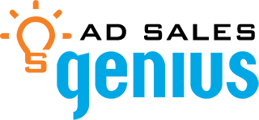This article pertains to the customization of the Proposal/Contract, Invoice, Statement and Payment Plan templates.
To Customize Your Templates:
-
An admin user can customize the proposal/contract, invoice, statement and payment plan templates. Select System Settings from the navigation panel then select Templates on the next screen.
 .
.
- To create a row of templates, select +Add Template in the top right hand corner. Then, upload and name the logo.
- You will want to name the template to help users differentiate when selecting which one to use for the proposal they're creating.


- You will want to name the template to help users differentiate when selecting which one to use for the proposal they're creating.
You can edit what information is or is not displayed on your templates. If you choose not to customize your templates, then the system will display the default.
Before You Begin Editing
It is important to note that due to how highly customizable these templates are, there is room for error. Here are a few pointers to avoid errors on the PDF of your templates:
- Do not edit the text of the {{Merge Tags}}. Otherwise, this will prevent the Merge Tag from pulling in the information it is intended to. For example, do not italicize or bold the text within the brackets.

- Do not remove any of the {% if %} tags. These tell the system to include/exclude parts of the contract depending on whether or not they were added when building the proposal. For example, if a Down Payment was added when building, the template needs to know that this field needs to be found and pulled onto the PDF of the contract.

- Do not change the Content area width from 700px.

- Do not remove the Signature Line Item Merge Tag. This is required, particularly when sending via DocuSign

The Content

- CONTENT tab - A list of all the content types you can drag and drop onto the template. You can drag and drop these to anywhere on the template.
- TEXT - This content box allows you to type in custom text. This is also the content box you will need for inserting {{Merge Tags}}.
- IMAGE - How to insert an image onto your contracts.
- BUTTON - If you want to add a button for a call to action.
- DIVIDER - A line to break up areas on your template.
- SOCIAL - Add icons with links to your social medias.
- DYNAMIC CONTENT - All the gray boxes on the template are dynamic content. These content boxes are pre-templated and pull in data from different areas within the system.
Tables can't be imported directly. Please insert an image of your table which can be found here.
- HTML - For coders who want to add in any HTML code.
- Contract Line Items - pull in the insertions added on the contract
- Payment Plan - pull in the payment plan attached to the contract
Note: it is suggested to create one template for Payment Plan contracts and one without - DocuSign Signature Line - the fillable signature line the customer sees in DocuSign
- User Template Header - your personalized template header
- Logo - the logo associated with the contract

The Rows

The rows allow you to drag and drop blue, empty boxes onto the template. You can then toggle over to the CONTENT tab and drag and drop the various content into one of the blue boxes. The purpose of the rows is to establish a layout within your template.
For example, if you drag and drop the last set of Rows onto the template, you'll have four open boxes ready for content placement.

The Settings

The settings tab lets you change the Background Color of the entire e-mail, Content Area Background Color, Font and the Link Color.
Note: do not change the Content area width from 700px
The Template

- Template: Logo - Where the logo associated with template chosen when building the proposal will appear. You can move this to a different area or delete from the template altogether.

- User Template Header - Where your personalized template header found under My Account will appear.

- {{Merge Tag}} - This is an example of what the Merge Tags look like when they are placed on the template. This particular example will pull in the Advertiser Name. There are several Merge Tag options.
Note: do not edit the text of the {{Merge Tags}}
- Contract Line Items - The area where your line items will appear. You can move this to a different area or delete from the template altogether.
- {% if %} - This is an If Statement, which tells the template to disregard a Merge Tag if it is irrelevant. For example, if you did enter Contract Notes, the {% if contract.notes %} tells the template to pull in those notes where the {{contract.notes}} Merge Tag is. If there are no Contract Notes, the template knows to disregard this Merge Tag.
- The invoice template has a Pay Online button by default. If you would like to hide this button when printing invoices and mailing out, use a {%if balance != 0 %} to hide it.
- No Content Here -Simply means that you have not dragged and dropped any Content from the right-hand column
Setting the Default Template
- Once your template(s) is complete, be sure to choose which one you want to show as your default
- The default will apply to contracts/invoices when there is nothing selected in the Template dropdown on the proposal edit screen
- To set the default, go to Settings > All Settings > General Settings > Account: Default Template and choose from the dropdown
- Save your changes, so that going forward, that template applies to all contracts/invoices that do not have a template specified at the time of creating the proposal.
